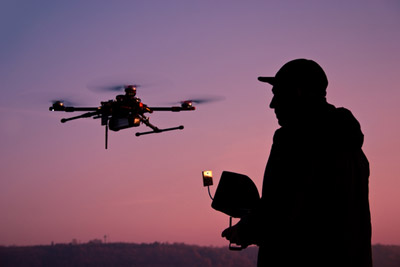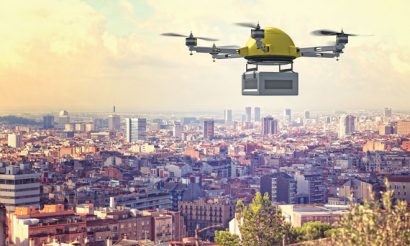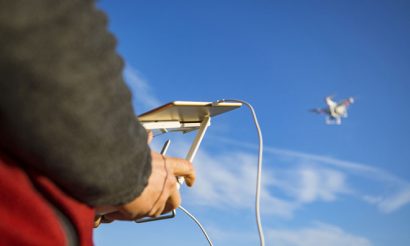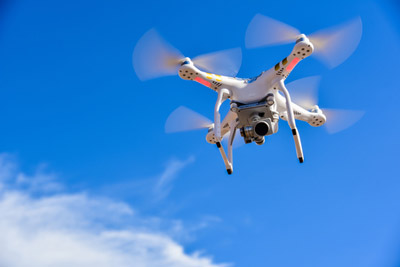Discovering Drones: New drone regulations take effect in Australia, but for how long?
- Like
- Digg
- Del
- Tumblr
- VKontakte
- Buffer
- Love This
- Odnoklassniki
- Meneame
- Blogger
- Amazon
- Yahoo Mail
- Gmail
- AOL
- Newsvine
- HackerNews
- Evernote
- MySpace
- Mail.ru
- Viadeo
- Line
- Comments
- Yummly
- SMS
- Viber
- Telegram
- Subscribe
- Skype
- Facebook Messenger
- Kakao
- LiveJournal
- Yammer
- Edgar
- Fintel
- Mix
- Instapaper
- Copy Link
Posted: 20 October 2016 | Maurice Thompson, James Cooper and Jess Harman, Clyde&Co | No comments yet
Clyde&Co detail new regulation take effect in Australia but the move raises questions within the industry… for how long will they last?…


The Civil Aviation Safety Authority (CASA)‘s new rules governing the operation of remotely piloted aircraft (RPA) in Australia took effect in late September. While ongoing regulatory review was inevitable, it has come as a surprise that less than two weeks after the new regulations entered into force, the Australian Government has already launched a wide-ranging safety review into the RPA laws.
The new regulations
The new regulations introduce a risk-based framework for regulating commercial RPA operations in Australia. The aim is that the regulations will be less restrictive and reduce the cost and legal requirements for RPA operations that are considered to be “lower risk”.
Key outcomes introduced by the regulations include:
- new weight classifications for RPA;
- the introduction of the concept of “excluded RPA”, which represent RPA operations considered to be lower risk; and
- extended operating rights for private landowners to fly RPA weighing less than 25kg over their own property.
New weight classifications
The new weight classifications separate RPA into categories that are considered to be either “very small” (where the RPA weighs under 2kg), “small” (2–25kg), “medium” (25–150kg), or “large” (over 150kg). The weight class of the RPA, in turn, determines the certification and licensing requirements to be met by commercial operators, as well as the conditions under which RPA may be operated.
Excluded RPA
The term “excluded RPA” introduced by the new regulations encompasses RPA that are considered to be lower risk based on size and operational use. RPA that fall within the category of “excluded RPA” include:
- “very small” RPA operated for commercial purposes;
- “small” RPA operated by private landowners on their own property; and
- “medium” RPA operated by private landowners on their property (subject to some additional pilot licensing requirements).
Excluded RPA have reduced regulatory requirements compared with other RPA under the new rules. For most operators of an excluded RPA, neither an operator’s certificate nor a remote pilot licence will be required regardless of whether the operator is flying for commercial or recreational purposes. Instead, commercial operators are required to notify CASA, through an online portal, at least five days before their first commercial flight, and to also comply with the “standard RPA operating conditions”.


Those standard operating conditions are:
- only fly during the day and keep the RPA within visual line of sight;
- never fly higher than 120m (400 feet) above the ground;
- keep the RPA at least 30 metres away from other people;
- keep the RPA at least 5.5 kilometres away from controlled airspace;
- never fly over populous areas such as beaches, parks and sporting fields;
- never fly over or near an area affecting public safety or where emergency operations are underway (without prior approval). This could include, for example, a situation involving police operations, firefighting efforts or a car crash; and
- only fly one RPA at a time.
The consequences of non-compliance with the standard operating conditions includes fines of up to AUD9,000, and possible imprisonment. CASA is the responsible authority for overseeing the safe operations of RPA and monitoring and enforcing compliance with the regulatory requirements. Its task in that regard will no doubt become an increasingly burdensome one with the rapid growth in RPA user numbers.
Extended operating rights for private land owners
Under the new rules, private land owners are able to carry out some commercial-like operations on their own land with RPA up to 25kg, provided that they are not paid for the work. This is likely to be a major advantage for RPA capabilities across a range of sectors, including agriculture, mining, oil and gas, and building and construction.


Industry reaction to the changes and announcement of safety review
There has been much discussion in recent months about the effect of the new rules on the rapidly developing RPA industry in Australia. Many have welcomed the flexible regulatory approach adopted by CASA, claiming that it will reshape the RPA industry to become more competitive by easing the administrative burden on CASA, particularly in the market of “excluded RPA”.
There are many industries likely to benefit from the changes, such as agribusiness, building and construction, mining, environmental research, emergency services, and oil and gas. The flexible regulations will present opportunities for a wider range of RPA users to invest in drone technology that is tailored for use in their own industry. For example:
- RPA are being used in the oil and gas industry as a safe and cost-effective means to survey oil platforms;
- farmers are utilising RPA for aerial photography, surveillance and crop spraying; and
- researchers currently use RPA for a range of monitoring activities, such as gathering environmental data.
Some members of the industry (pilots, air traffic controllers, and some user groups) have, however, voiced concerns that the new rules do not adequately address the potential threats to safety and privacy posed by an ever-increasing number of amateur and uninsured RPA users.
Those concerns centre on the:
- relaxing of licencing and training requirements for “excluded RPA” which increases the risk of safety-related incidents such as mid-air collisions due to misuse by operators with minimal knowledge of airspace rules
- assessment of RPA of up to 2kg as “low risk” in circumstances where drones of such size still present a considerable safety risk to other air users and persons or property on the ground
- lack of a requirement for insurance coverage, and the lack of access to insurance for non-certified users of RPA, which exposes third parties
- the increased threat of privacy breaches, noting that CASA is on record as stating that privacy laws are not within its remit.
Comparisons are made with key overseas jurisdictions. For example, under new drone laws in the United States which commenced on 29 August 2016, the US Federal Aviation Administration imposed a minimum level of training, age restrictions, and pre-flight inspection of aircraft, among others, upon operators of small RPA. Likewise, in Europe, new prototype rules recently released appear, in some aspects at least, to propose stricter requirements on RPA use than the new Australian regulations.


These concerns led some industry members in Australia to challenge the new regulations under a rarely invoked legislative process of disallowance pursuant to the Legislation Act 2003. This procedure allows either house of parliament to effectively repeal delegated legislation (such as CASA regulations).
Prompted, it would seem, by that industry pressure, the Australian Government announced on 10 October 2016 that it was commencing a review of aviation safety regulation in relation to the operation of RPA, to be overseen by CASA. The purpose of the review is to “ensure the aviation safety regulatory system in Australia continues to facilitate a safe flying environment for all airspace users but also enable growth and innovation in drone-usage”. The specific scope and timing of the review is still to be made clear. In addition to that safety review, media reports in recent days suggest that a motion may be lodged with the Australian Senate for the opening of a formal Senate Inquiry into air safety issues surrounding the use of drones in Australia.
Discussion
Regulation of the developing drone industry was always going to be one of the key challenges in the aviation scene. The work done in this area at local and global levels is significant and, we would submit, far exceeds other comparable industries, such as driverless cars (in road transport) and autonomous ships (in a maritime setting).
Australia, via the work of CASA, has for many years led the way on the regulation of drones as advancements in the industry have been made. The new regulations that took effect on 29 September 2016 came about following a two-year period of research and consultation with the local industry and with key overseas regulators. CASA should be applauded for its efforts in making available a large amount of guidance material for prospective RPA operators to explain the new requirements.
Nevertheless, the fact that, less than two weeks after the new regulations entered into force, the Australian Government has seen fit to launch a safety review into RPA laws, will be viewed by some as a chastening exercise for CASA. It was always to be expected that regulatory improvement would be needed to keep pace with the demands of the industry, but not so soon after the implementation of the new regulations.
The safety review is expected to assess all aspects of RPA safety laws in Australia, which includes a review of the newly implemented rules.
We expect there to be close consultation with regulators in other key markets such as the US, UK and Europe. This is consistent with one of the takeaway messages from the recently held International Civil Aviation Organisation 39th Assembly wherein it was agreed that the drone industry needs action at a global level.
It appears then that Australia may again be entering a period of uncertainty pending the outcome of the Government safety review, which will be followed closely by RPA users, insurers, industry associations, and the public at large. Significant further changes could well be on their way. Until then, we will continue to monitor the application of the newly implemented regulations.

















